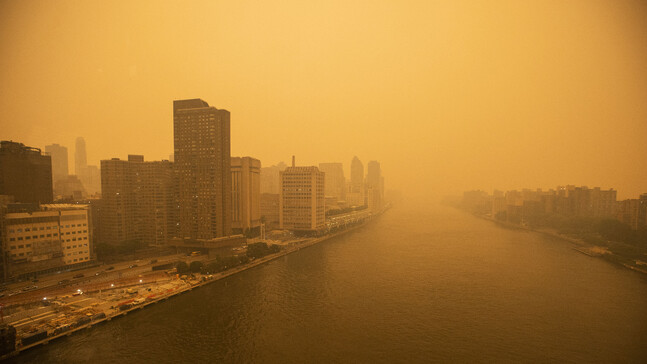By Tiffany Moustakas, Editor at LinkedIn News

New York City topped cities worldwide for the worst air-quality Wednesday afternoon as a plume of smoke from Canadian wildfires also blanketed the Midwest, Ohio Valley, Northeast and Mid-Atlantic for a second day. Lowered visibility prompted the Federal Aviation Administration to halt some flights to LaGuardia Airport, while a total of 1,600 were delayed en route to both LaGuardia and Newark Liberty Airport by afternoon. While forecasts are for the smoke to move south and west, more than 400 uncontained wildfires north of the border have led to air quality alerts for 18 statesimpacting tens of millions of people from South Carolina to New Hampshire.
- Experts say fine particles contained within the smoke are hazardous to breathe.
- New York City’s air quality and pollution ranking hit 355, compared with 167 for Dubai and 164 for Delhi, according to IQAir.
- New York Gov. Kathy Hochul called the state’s deteriorating air quality “an emergency crisis,” while Philadelphia and Washington, D.C., both issued “code red” health advisories.
- Google told East Coast staff to work from home on Wednesday.
- So far this season, Canada has had more than 2,200 wildfires, with more expected.
By Scott Pecoriello
Founder / CEO @ WeatherOptics Inc





 Cred my awesome brother Muneesh Jain
Cred my awesome brother Muneesh Jain
Yesterday New York City ranked as the 2nd most polluted city in the world as heavy wildfire smoke from Canada caused air quality to plummet.
A powerful storm system just offshore New England is acting like a fan to the flames in Quebec, exacerbating wildfire growth and pushing smoke hundreds of miles south into the Northeast and Mid-Atlantic.
150 wildfires continue to burn – with 110 of the fires considered out of control – and will lead to even lower air quality and visibility today across the same regions of the US.
WeatherOptics has developed a wildfire API that allows you to track active fires, and will be releasing a major update this summer that will allow businesses and communities to better understand when fires are likely to develop and how they will spread.
Learn more today: https://lnkd.in/eSBamRcX